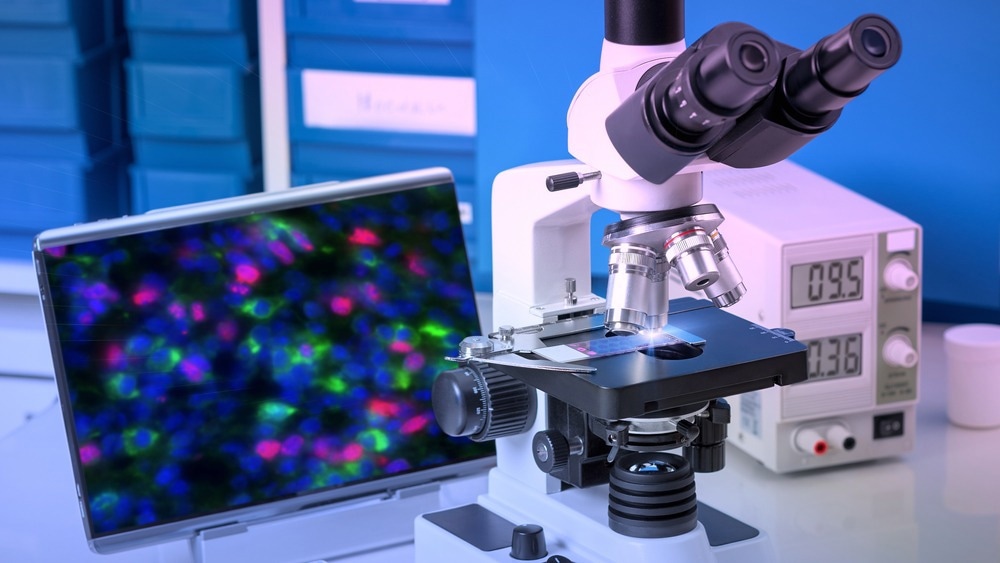In this interview, Jordi Carreras delves into the fascinating world of Cell Painting, a powerful technology gaining momentum in drug discovery. He shares insights into his groundbreaking research, the unique aspects of Phenaros' drug discovery platform, and the synergy between academia and industry.
Can you provide an overview of your talk at ELRIG Drug Discovery 2023 and explain why phenotypic morphological profiling, particularly using Cell Painting, is gaining momentum in the field of drug discovery?
In my talk, I presented our lab's work on establishing an infrastructure for autonomous phenomics, emphasizing our open-source automation and the role of artificial intelligence. I also shared two examples of how we've applied our platforms.
The increasing interest in phenotypic morphological profiling, especially Cell Painting, is evident through initiatives like the Joint Undertaking in Morphological Profiling-Cell Painting Consortium (JUMP-CP). Cell Painting is a powerful technique developed at the Broad Institute that involves staining different cell compartments with fluorescent dyes. It provides unique fingerprints of cellular perturbations, making it valuable for various applications, including drug discovery.
In your presentation, you mentioned that your group at Uppsala University has set up an automated lab and e-infrastructure for Cell Painting and morphological profiling experiments. Could you elaborate on the advantages and capabilities of this setup for academic drug discovery and MoA prediction?
Our fully automated Cell Painting setup, coupled with robust e-infrastructure, enables us to generate high-quality data efficiently. This setup is particularly advantageous for academic research because it reduces dependence on costly third-party commercial solutions. While this level of automation may not be feasible for all academic labs, it allows us to produce reproducible, open-source results.
We can generate terabytes of images and gigabytes of numerical data, creating a valuable resource for academia. Moreover, our infrastructure ensures data integrity and quality, making it suitable for various applications, including Mechanism of Action (MoA) prediction.
You mentioned using the profiles of 5,270 annotated drugs and compounds from the SPECS drug repurposing library for MoA investigation. How has this extensive dataset contributed to your research, and what insights have you gained from it?
This dataset, which is very much inspired by the Drug Repurposing Hub library at the BROAD, has been a milestone for our lab. It provides a wealth of information for various research purposes, including MoA elucidation. By comparing profiles generated through Cell Painting, we can identify the potential MoA of compounds. Additionally, we apply artificial intelligence to build predictive models that can anticipate a compound's effects on specific cellular components, such as kinases or receptors.
However, not all drugs in the library exhibit the expected effects. To enhance the dataset's power, we may need to rerun experiments with different conditions or cell lines. Nonetheless, it has been a valuable resource for our research.
Could you walk us through an example or case study where Cell Painting and morphological profiling were particularly impactful in elucidating the mechanism of action of a drug or compound?
We received 50 new chemical entities with unknown mechanisms of action. To determine their MoA, we screened these compounds using the same Cell Painting approach we used for the drug repurposing library. By comparing the profiles of these new compounds to those of known drugs, we could identify potential MoAs.
This case study showcases the power of Cell Painting and morphological profiling in unraveling the mechanisms behind novel compounds, which is crucial for drug discovery efforts.

Image Credit: tilialucida/Shutterstock.com
The combination of phenomics, AI, and automation seems to be a core aspect of your research. Can you share some specific applications or results where this combination has proven to be especially powerful in advancing drug discovery?
We have two advanced projects demonstrating the power of combining phenomics, AI, and automation. In one project, we aimed to find drugs that could transform an aggressive form of childhood cancer, rhabdomyosarcoma, into a less aggressive form. We identified promising candidates by screening compounds and analyzing their effects using Cell Painting and AI.
In another project related to SARS-CoV-2, we used similar methods to identify compounds with potent antiviral activity against the virus. AI plays a significant role in designing efficient experiments, analyzing data, and making informed decisions at various stages of these projects.
In your role as Chief Scientific Officer at Phenaros Pharmaceuticals, you focus on leveraging phenomics, AI, and automation for drug discovery. Could you tell us more about the unique aspects of Phenaros' drug discovery platform and its potential impact on the industry?
At Phenaros, we're applying the expertise and technologies developed in our research group to create an industry-level drug discovery platform. One distinctive aspect is our approach to conducting smart, iterative discovery cycles rather than brute force screening. This strategy reduces time and cost in lead compound discovery.
Our platform combines AI, automation, and phenomics to expedite drug discovery processes. By making these technologies more accessible, we hope to drive innovation and improve the efficiency of drug development in the industry.
Your background includes several leadership roles. How has your experience in the leadership roles you've had in the past influenced your approach to drug discovery, and what synergies do you see between these two domains of academia and industry?
I have had the priviledge to co-lead two phenotypic drug discovery research groups in academia, which has provided me very valuable training. In terms of leadership, I want to create an environment where people feel part of the big picture, where they feel motivated and most of all, where they can grow and evolve towards their career path. However, there's a fundamental difference between academia and industry in terms of drug discovery. In academia, the focus is often on publishing papers, securing funding, and exploring the biology of diseases. While these are essential, transitioning from academic discoveries to marketable drugs can be challenging.
Industry drug discovery focuses on turning discoveries into marketable drugs, often requiring forming companies and navigating regulatory processes. Collaboration between academia and industry in drug discovery has tremendous potential, but there's still work to facilitate these collaborations effectively.
Phenotypic drug discovery often involves exploring complex biological systems. What challenges have you encountered in this field, and how have you addressed them in your research and industry work?
A common challenge in phenotypic drug discovery is balancing complexity. Starting with a robust and straightforward system is crucial for generating reproducible results. We aim for simplicity initially and then increase complexity as we validate findings. This approach helps us maintain efficiency in the discovery process.
Navigating the complexity of biological systems requires patience and careful validation of results. It's essential to strike a balance between understanding the complexity and generating actionable insights.
Can you share your perspective on the future of phenotypic morphological profiling and its role in shaping the drug discovery landscape? What exciting developments do you foresee in this area?
The future of phenotypic morphological profiling is incredibly promising. The technology is maturing rapidly, with a growing community of researchers and a focus on open collaboration. Advances in instrumentation, automation, and artificial intelligence are enhancing its capabilities.

Image Credit: Gorodenkoff/Shutterstock.com
I anticipate we'll witness the continued emergence of innovative applications and methodologies in this field. As we better understand the power of morphological profiling, we'll see more breakthroughs in drug discovery and personalized medicine.
As someone with a multidisciplinary background in life sciences, AI, and drug discovery, what advice would you give to researchers and professionals interested in pursuing a career in this rapidly evolving field?
Finding your niche within this multidisciplinary field is crucial. Specializing in areas like AI, automation, and phenomics can be highly rewarding as these technologies play a pivotal role in shaping the future of drug discovery. Perseverance and a willingness to adapt are key as this field evolves rapidly.
What message or key takeaways do you hope attendees of ELRIG Drug Discovery 2023 will gain from your talk and your insights into phenotypic profiling and drug discovery?
I hope attendees take away three key messages: First, the importance of establishing a robust infrastructure for high-quality morphological profiling experiments. Second, the idea that this infrastructure is attainable with ingenuity and perseverance. And finally, the recognition of the tremendous power that morphological profiling, combined with AI and automation, holds for advancing drug discovery. The potential applications and innovations in this field are incredibly exciting.
Where can readers find more information?
About Jordi Carreras-Puigvert
Jordi Carreras-Puigvert is Associate Professor in preclinical drug discovery, and co-leads the Pharmaceutical Bioinformatics group (https://pharmb.io/) at Uppsala University, Sweden. He obtained a MSc in Biotechnology by the Universitat Autònoma de Barcelona, Catalunya, and he holds a PhD in Life Science from the university of Leiden, the Netherlands. After a 2 year postdoc at the Leiden University Medical Centre, he obtained a Marie Curie grant and moved to Sweden, for a second postdoc at Karolinska Institutet, Stockholm. Prior to moving his research to Uppsala University, he was co-leading the Cancer Therapy group, focused on phenotypic drug discovery, also at Karolinska Institutet. Jordi Carreras-Puigvert is also Chief Scientific Officer at Phenaros Pharmaceuticals (https://www.phenaros.com), an AI-first drug discovery startup. The pharmb.io research group is pioneering the use of Cell Painting-based morphological profiling for prediction of mechanism of action, as well as academic drug discovery. As CSO of Phenaros, Carreras-Puigvert focuses on the exploitation of the company’s drug discovery platform leveraging phenomics, AI and automation.
He obtained a MSc in Biotechnology by the Universitat Autònoma de Barcelona, Catalunya, and he holds a PhD in Life Science from the university of Leiden, the Netherlands. After a 2 year postdoc at the Leiden University Medical Centre, he obtained a Marie Curie grant and moved to Sweden, for a second postdoc at Karolinska Institutet, Stockholm. Prior to moving his research to Uppsala University, he was co-leading the Cancer Therapy group, focused on phenotypic drug discovery, also at Karolinska Institutet. Jordi Carreras-Puigvert is also Chief Scientific Officer at Phenaros Pharmaceuticals (https://www.phenaros.com), an AI-first drug discovery startup. The pharmb.io research group is pioneering the use of Cell Painting-based morphological profiling for prediction of mechanism of action, as well as academic drug discovery. As CSO of Phenaros, Carreras-Puigvert focuses on the exploitation of the company’s drug discovery platform leveraging phenomics, AI and automation.